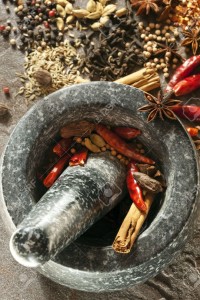Return to traditional methods – Processed Spice causes adulteration
Spice Adulteration – Aspects of Adulteration in spices – Turmeric, cardamom, cloves, nutmeg, coriander etc
Spices had great monetary value in the early ages as they were only available to the rich.Spices have a vast range of functionalities which include medicinal use,flavouring of food, perfumery, cosmetics, and preservative properties. Although spices added aroma and flavour characteristics to food, they were more valued as perfumery, cosmetic and medicinal agents in ancient times. Today large amounts of spices are utilised by the commercial sector of industrialised countries, primarily in food processing . The use of spices pervades the food industry, for example spices are used in meat, fish, bakery and vegetable products.
The spice trade has been growing globally and with increasing consumer demand. The increase of both the value of spices and consumer demand has increased the demand for better quality spices from suppliers and retailers. This has encouraged illegal or fraudulent practises -adulteration, and continuous monitoring is required to identify incidences of such practices.
Food/Spices Adulteration :
It can be categorized into two separate groups ie.,incidental and intentional adulteration. The first one occurs due to ignorance or improper facilities. It can occur during the harvesting time for example include inclusion of pesticide residues, bacterial contamination etc.,The second one,better known as economic adulteration – addition of inferior materials to a food ,which include ground material (e.g. saw dust), leave, powdered products (e.g. starches) and other spice species,to heighten appearance qualities and value for economical gain
How to test yourself ? – Spices uses -health benefits-culinary uses
Spices can broadly be put under four groups on the basis of the effect they have on the taste and appearance of food
To season: Spices used to enhance taste include mustard, pepper, ginger and garlic. They are usually ground into a paste and fried before being added to food.
| Mustard | Adulterant -Argemone Seeds | Method for detecting-Argemone seeds have rough surface & on pressing is white inside. Mustard is yellow inside |
| Black Pepper | Adulterant –Papaya Seeds, Immature pepper | Method for detecting-Float the sample in alcohol. The mature black pepper berries will sink, while papaya seeds and light black pepper float. |
To flavour: Spices and herbs which combine taste and smell include cardamom, cloves, nutmeg, coriander, mint and bishop’s weed. These are used while the food is being cooked in the cases of biriyani, soup, etc., but can also be introduced at the end, after food has been cooked, as a garnish.
| Cumin Seed / Jeera | Adulterant Grass seeds coloured with charcoal | Method for detecting-Rub the cumin seeds on your palm. If palm turns back, adulteration with charcoal is indicted |
| Cloves | Adulterant – Exhausted or De-oiled Cloves | Method for detecting-Using the magnifying glass, observe the individually spread cloves closely. Exhausted cloves can be identified by its small size and shrunken appearance. The characteristic pungent taste of genuine cloves is less pronounced in |
| Cinnamon Bark | Adulterant – Cassia Bark | Method for detecting-Cinnamon bark is very thin and can be rolled around a pencil or pen. It also has a distinct smell. Cassia bark is very thick and stiff and cannot be rolled. Cassia bark comprises of several layers in between the rough outer and inner most, smooth layers. On examination of the bark closely, a clear distinction can be made |
In Indian cooking, garam masala – Garam Masala – Curry Masala Powder-Fresh Magic Blend of Spices
A combination of powdered spices —– is also sometimes sprinkled over cooked food to provide aromatic flavouring. Sometimes, whole spices are used for tempering, which is called chaunk, baghar or tadka. In this process, oil is heated till just below its smoking point and whole spices are added to it. When the spices begin to crackle, it is added to the food to be cooked or already cooked. The flavour of the spices is extracted in the hot oil, hence adding flavour to the food.
To thicken: Spices such as poppy seeds are used to thicken curries.
For appearance: Turmeric powder, saffron, etc. are used to give colour to food to make it appealing.
All spice items which is common or rare have their their respective adulterants that either are mixed while preparation of the spices or completely replace the original spices. In the raid,most of the locally branded or other branded spices were found mixed harmful substances like coloured crushed wood or rice husk to increase weight of each packet,while cancerous colours were mixed to improve the look and feel of the spices.
So what we do – Return to traditional methods. Buy whole spice and grind or grate or crush your own
First buy or purchase small amount spices from reliable sources and test .
Buy organic whenever possible -A Perfect Blend of Pure Spices is available NatureLoc






















